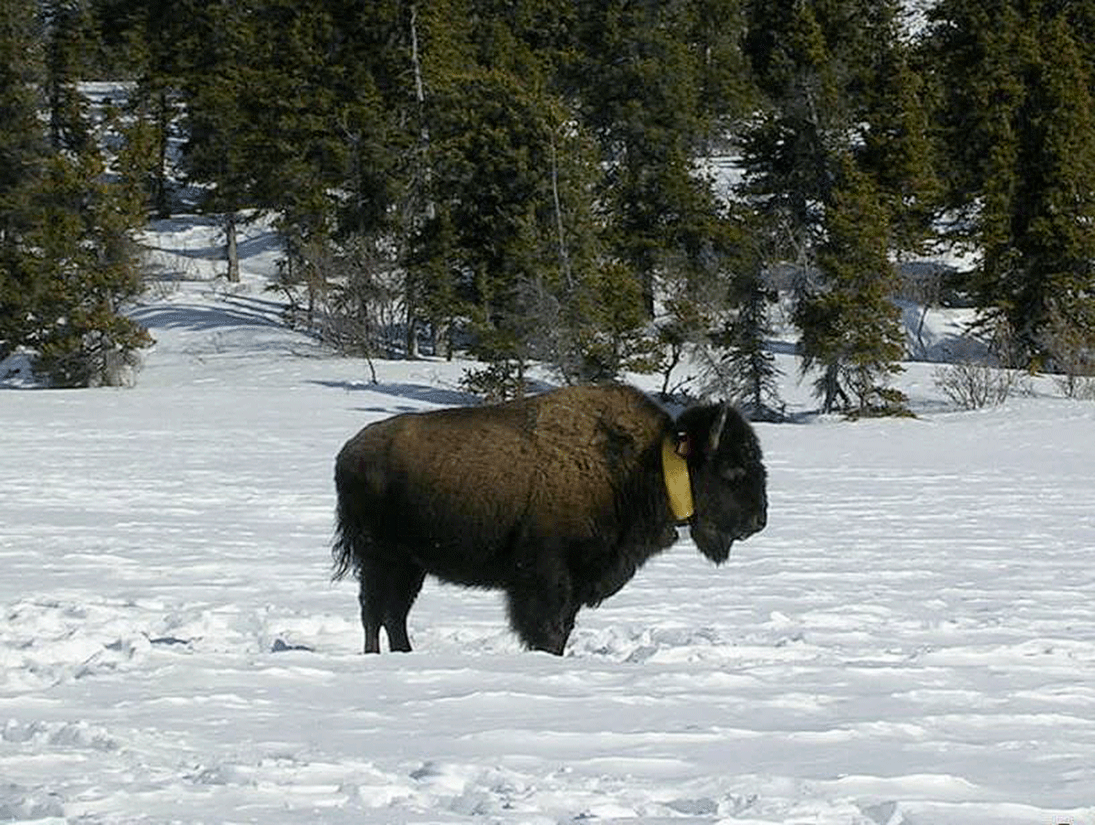Slow down and be careful, bison hunters urged
Conservation officers are asking hunters to take the extra time to ensure the animal they’re stalking isn’t wearing a radio collar.
By Chuck Tobin on January 20, 2016
Conservation officers are asking hunters to take the extra time to ensure the animal they’re stalking isn’t wearing a radio collar.
Officer Russell Osborne of Haines Junction said a collared bison was shot last week near the Aishihik Village, located at the north end of Aishihik Lake.
The hunter immediately reported the incident, as required under the Wildlife Act.
The large bull was seized as the incident involved two bison being shot accidentally, Osborne said, noting he did not want to be too specific about the details.
He said the hunter was given a warning and was permitted to keep the first bison, but the large bull was seized and its meat will be distributed.
It is illegal under the Wildlife Act to knowingly shoot a collared animal, whether it’s a bison or a different animal.
“We are asking hunters to take a little more time and be careful and try not to kill these collared animals because they are important and we get a lot of data from them,” Osborne said.
In the last few years, about one or two collared bison have been shot each year, Osborne added.
There are about 40 collared bison.
While most of the collars are placed on cows, biologists have collared a few large bulls to gather information about that segment of the population, Osborne explained.
It costs about $5,000 to collar a bison.
It’s also important for hunters to notify conservation officers if they accidentally shoot a collared animal, enabling officers to check if the meat is safe to eat.
Osborne said biologists use a variety of drugs to sedate animals they’re collaring, and those drugs can remain in the animal’s system for quite some time.
In the case of the large bull, there was a 35-day wait period and the animal was collared six or seven months ago, he explained.
Since last Sept. 1, when the highway corridor hunt for bison opened, there have been 58 animals harvested – 35 bulls and 23 cows.
The census in the summer of 2014 estimated the bison population at 1,470.

Be the first to comment